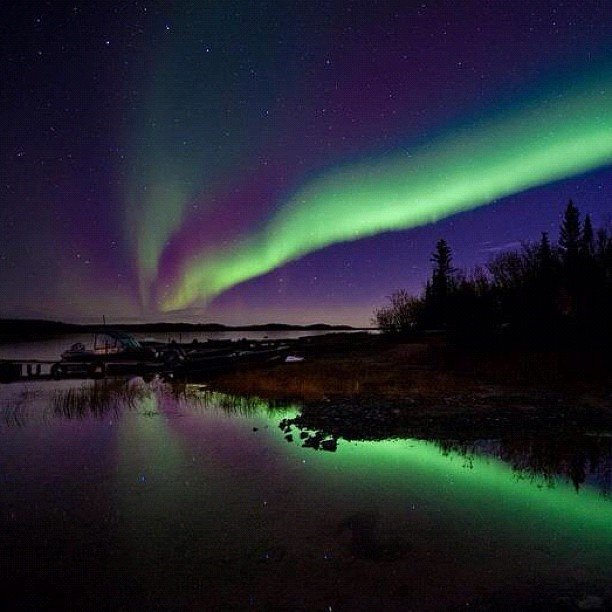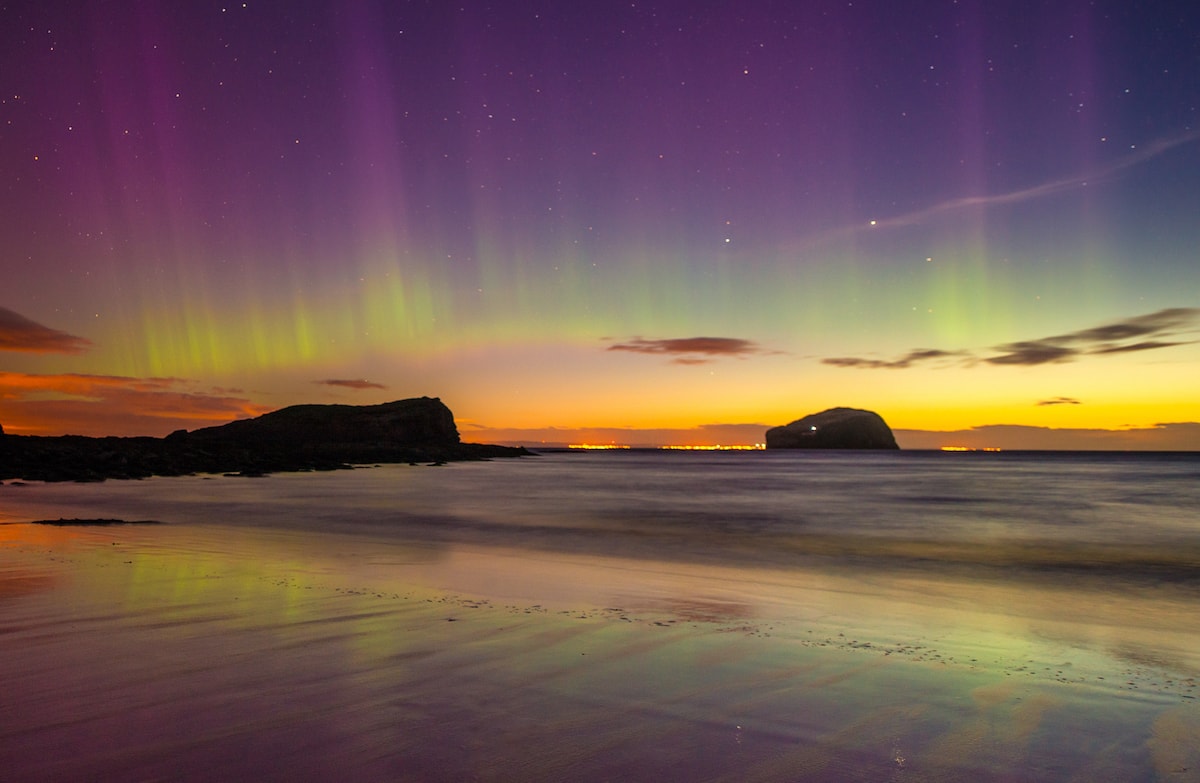Have you ever dreamed of witnessing the mesmerizing dance of the northern lights? If you're in Ohio, you're in for a treat! The best time to see northern lights in Ohio is a topic that sparks curiosity among stargazers and aurora enthusiasts. But let’s be real—Ohio isn’t exactly the first place that comes to mind when we think of auroras. However, with the right conditions and a little bit of luck, you can catch this celestial phenomenon right in your backyard!
Seeing the northern lights in Ohio is like winning the cosmic lottery. It doesn’t happen often, but when it does, it’s absolutely breathtaking. The aurora borealis is caused by charged particles from the sun interacting with Earth’s magnetic field, creating a stunning light show in the sky. While places like Alaska or Norway are famous for their auroras, Ohio can surprise you with its own version of this natural wonder.
In this article, we’ll dive deep into everything you need to know about the best time to see northern lights in Ohio. From understanding the science behind auroras to practical tips for maximizing your chances, we’ve got you covered. So, grab your telescope, pack your camera, and let’s explore the magic of the northern lights in Ohio!
Read also:Tony Hinchcliff Wife Discovering The Woman Behind The Man
Table of Contents
- The Science Behind Northern Lights
- Best Time to See Northern Lights in Ohio
- Weather Conditions for Aurora Viewing
- Top Locations in Ohio for Aurora Hunting
- Essential Gear for Aurora Watching
- Tips for Maximizing Your Chances
- Safety Precautions for Nighttime Adventures
- Factors Affecting Aurora Visibility
- Common Myths About Northern Lights
- Conclusion: Your Northern Lights Adventure Awaits!
The Science Behind Northern Lights
Before we dive into the best time to see northern lights in Ohio, let’s take a moment to understand what makes this phenomenon so magical. The aurora borealis occurs when charged particles from the sun collide with Earth’s atmosphere. These particles are carried by solar winds and interact with gases like oxygen and nitrogen, emitting vibrant colors in the process.
Most of the time, auroras are visible in polar regions because the Earth’s magnetic field funnels these particles toward the poles. However, during strong geomagnetic storms, the auroral oval can expand southward, making it possible to see northern lights in places like Ohio. The colors you see depend on the altitude and type of gas involved. For instance, green is the most common color, caused by oxygen at lower altitudes, while red and purple hues occur at higher altitudes.
Understanding the science behind auroras helps you appreciate the beauty of this natural phenomenon even more. So, the next time you witness the northern lights, you’ll know exactly what’s happening up there in the sky!
Best Time to See Northern Lights in Ohio
Alright, let’s get down to business. The best time to see northern lights in Ohio is during winter months, particularly from December to February. Why? Well, winter nights are longer, providing more opportunities for auroral activity. Additionally, the Earth’s position relative to the sun during this time increases the chances of geomagnetic storms.
But here’s the kicker—seeing northern lights in Ohio requires a bit of luck. You’ll need a strong geomagnetic storm, clear skies, and minimal light pollution. Keep an eye on space weather websites like SpaceWeatherLive or Aurora Service for real-time updates on auroral activity. These platforms provide Kp index predictions, which indicate the strength of geomagnetic storms. A Kp index of 6 or higher significantly improves your chances of spotting auroras in Ohio.
Why Winter is Ideal
- Longer nights mean more hours of darkness, increasing visibility.
- Colder temperatures reduce atmospheric disturbances, creating clearer skies.
- Geomagnetic storms are more frequent during winter due to Earth’s tilt.
While winter is the prime season, don’t rule out autumn or spring entirely. Occasionally, strong geomagnetic storms can occur during these seasons, giving you a shot at witnessing the northern lights in Ohio.
Read also:Gamestop Saratoga The Rise Fall And Resurgence Of A Gaming Icon
Weather Conditions for Aurora Viewing
Weather plays a crucial role in aurora hunting. Even if a strong geomagnetic storm is occurring, cloudy skies can ruin your chances of seeing the northern lights. That’s why choosing the right weather conditions is essential.
Look for nights with clear or partly cloudy skies. You can check local weather forecasts or use apps like Clear Outside, which provide detailed sky condition reports. Additionally, avoid nights with high humidity or fog, as these can obscure your view of the auroras.
Key Weather Factors
- Clear skies: Essential for optimal visibility.
- Low humidity: Reduces atmospheric interference.
- No moonlight: A full moon can wash out the auroras, so aim for new moon phases.
Planning ahead and staying flexible with your schedule can greatly enhance your chances of success. Remember, patience is key when it comes to aurora watching!
Top Locations in Ohio for Aurora Hunting
Now that you know the best time to see northern lights in Ohio, let’s talk about where to go. Ohio may not have vast wilderness like Alaska, but it does have some fantastic spots for stargazing and aurora hunting. Here are a few top locations:
Hocking Hills State Park
Hocking Hills is one of Ohio’s most popular destinations for outdoor enthusiasts. Its remote location and minimal light pollution make it an ideal spot for aurora viewing. The park offers several camping areas, allowing you to spend the night under the stars. Just be sure to check park hours and regulations before heading out.
Maumee Bay State Park
Situated along Lake Erie, Maumee Bay State Park provides stunning views of the northern horizon. The lake’s vast expanse creates an unobstructed view, perfect for spotting auroras. Plus, the park’s well-maintained trails and picnic areas make it a comfortable place to set up your gear.
Magnolia Woods Preserve
For a more secluded experience, head to Magnolia Woods Preserve near Wooster. This nature preserve boasts dark skies and peaceful surroundings, making it a great spot for aurora hunting. However, be prepared for limited amenities and rugged terrain.
No matter where you choose to go, always respect the environment and leave no trace. Pack out your trash, stay on designated trails, and avoid disturbing wildlife.
Essential Gear for Aurora Watching
Having the right gear can make all the difference in your aurora watching experience. Here’s a list of essentials to bring along:
- Camera: A DSLR or mirrorless camera with manual settings is ideal for capturing the northern lights. Use a wide-angle lens with a fast aperture (f/2.8 or lower).
- Tripod: A sturdy tripod is crucial for long exposure shots. It keeps your camera steady and prevents blurry images.
- Extra Batteries: Cold temperatures can drain your camera batteries quickly, so bring spares.
- Warm Clothing: Winter nights in Ohio can get chilly, so dress in layers and wear waterproof boots.
- Red Flashlight: A red flashlight helps preserve your night vision while still allowing you to see your gear.
Investing in quality gear will not only improve your chances of capturing stunning photos but also make your experience more comfortable and enjoyable.
Tips for Maximizing Your Chances
Here are some practical tips to increase your chances of seeing the northern lights in Ohio:
- Check Space Weather: Regularly monitor space weather websites for Kp index updates and auroral forecasts.
- Plan Ahead: Choose a location with minimal light pollution and clear skies. Arrive early to set up your gear and get comfortable.
- Be Patient: Auroras can appear suddenly and disappear just as quickly. Stay vigilant and keep an eye on the northern horizon.
- Bring Snacks: Long nights can be tiring, so bring some energy-boosting snacks and hot beverages to keep you fueled.
Remember, aurora hunting is as much about the journey as it is about the destination. Embrace the experience and enjoy the beauty of the night sky, even if the northern lights don’t show up.
Safety Precautions for Nighttime Adventures
While exploring Ohio’s dark skies, safety should always be a priority. Here are a few safety tips to keep in mind:
- Tell Someone Your Plans: Let a friend or family member know where you’re going and when you expect to return.
- Carry a Phone: Keep a fully charged phone with you in case of emergencies. Consider bringing a portable charger as backup.
- Watch Your Step: Uneven terrain and obstacles can be hard to see in the dark. Use a flashlight and proceed with caution.
- Respect Wildlife: Ohio’s forests are home to various animals. Keep your distance and avoid disturbing their habitat.
By taking these precautions, you can ensure a safe and enjoyable aurora hunting experience.
Factors Affecting Aurora Visibility
Several factors can influence your ability to see northern lights in Ohio. Understanding these factors can help you better plan your aurora watching trip:
- Geomagnetic Activity: Strong geomagnetic storms increase the likelihood of auroral activity.
- Light Pollution: Urban areas with excessive artificial lighting can obscure your view of the auroras.
- Cloud Cover: Overcast skies block the auroras, so aim for clear or partly cloudy nights.
- Moon Phase: A full moon can wash out the auroras, so plan your trip around new moon phases.
By considering these factors, you can optimize your chances of witnessing the northern lights in Ohio.
Common Myths About Northern Lights
There are several myths surrounding the northern lights. Let’s debunk a few of them:
- Myth #1: You can only see northern lights in the Arctic. Fact: While auroras are more common in polar regions, they can occasionally be seen at lower latitudes during strong geomagnetic storms.
- Myth #2: Northern lights only occur in winter. Fact: Auroras can happen year-round, but winter nights are longer and darker, making them easier to see.
- Myth #3: You need special glasses to see northern lights. Fact: The human eye can see auroras without any special equipment, although cameras can capture more vibrant colors.
Separating fact from fiction helps you approach aurora watching with realistic expectations.
Conclusion: Your Northern Lights Adventure Awaits!
In conclusion, the best time to see northern lights in Ohio is during winter months, particularly from December to February. While it may not happen often, the thrill of witnessing this natural wonder makes it all worth it. By understanding the science behind auroras, checking weather conditions, choosing the right location, and preparing the necessary gear, you can maximize your chances of success.
So, what are you waiting for? Grab your camera, bundle up, and head out into the night. The northern lights might just surprise you with their beauty. Don’t forget to share your experience with us in the comments below or tag us on social media. Happy aurora hunting!


